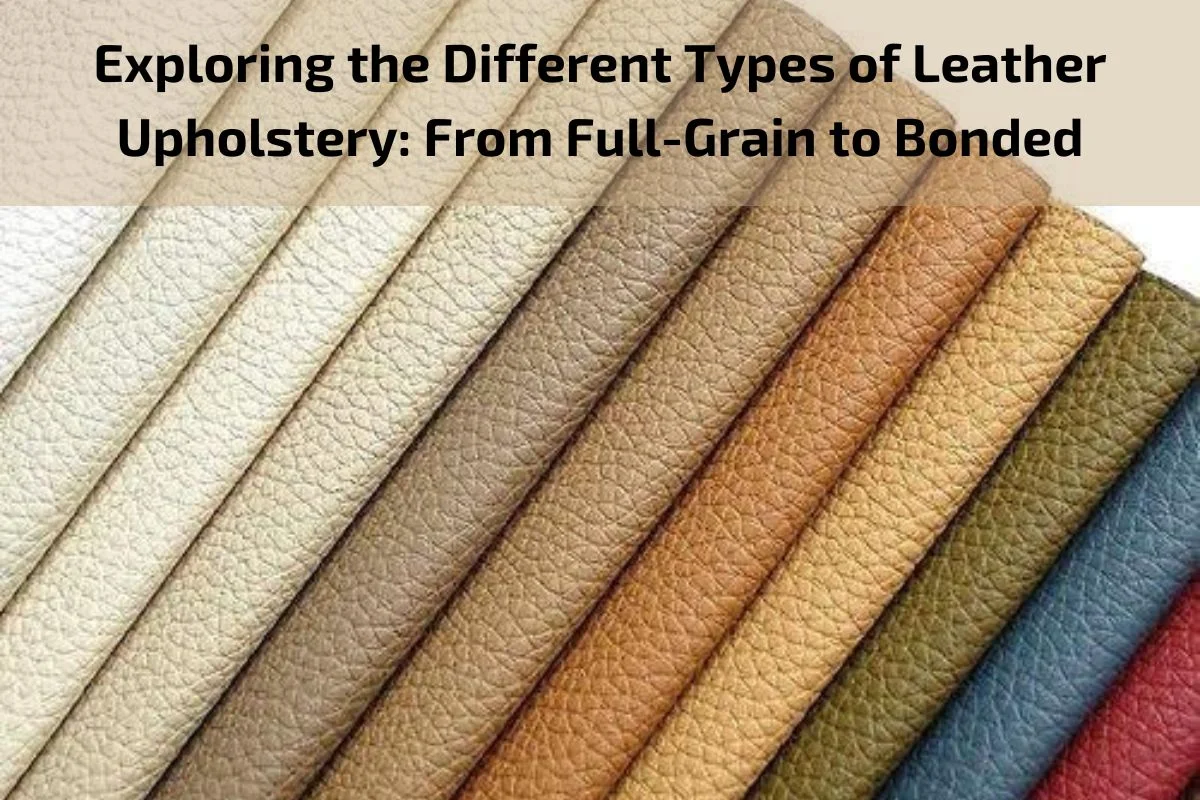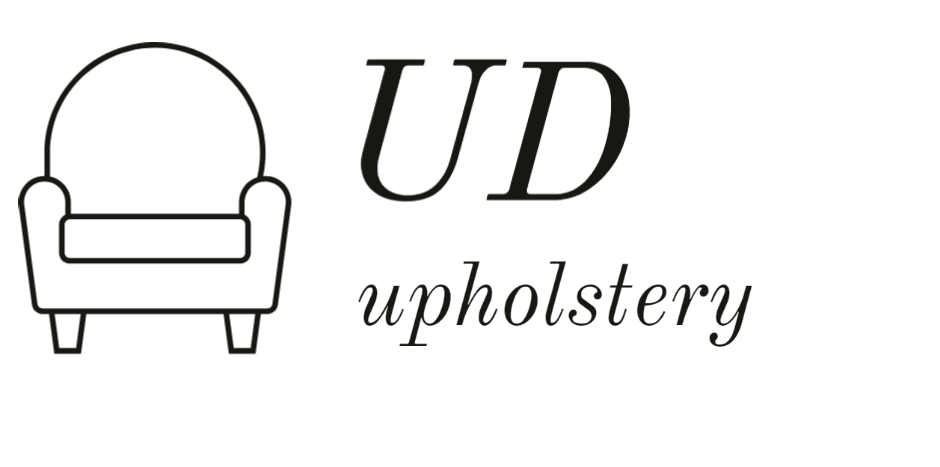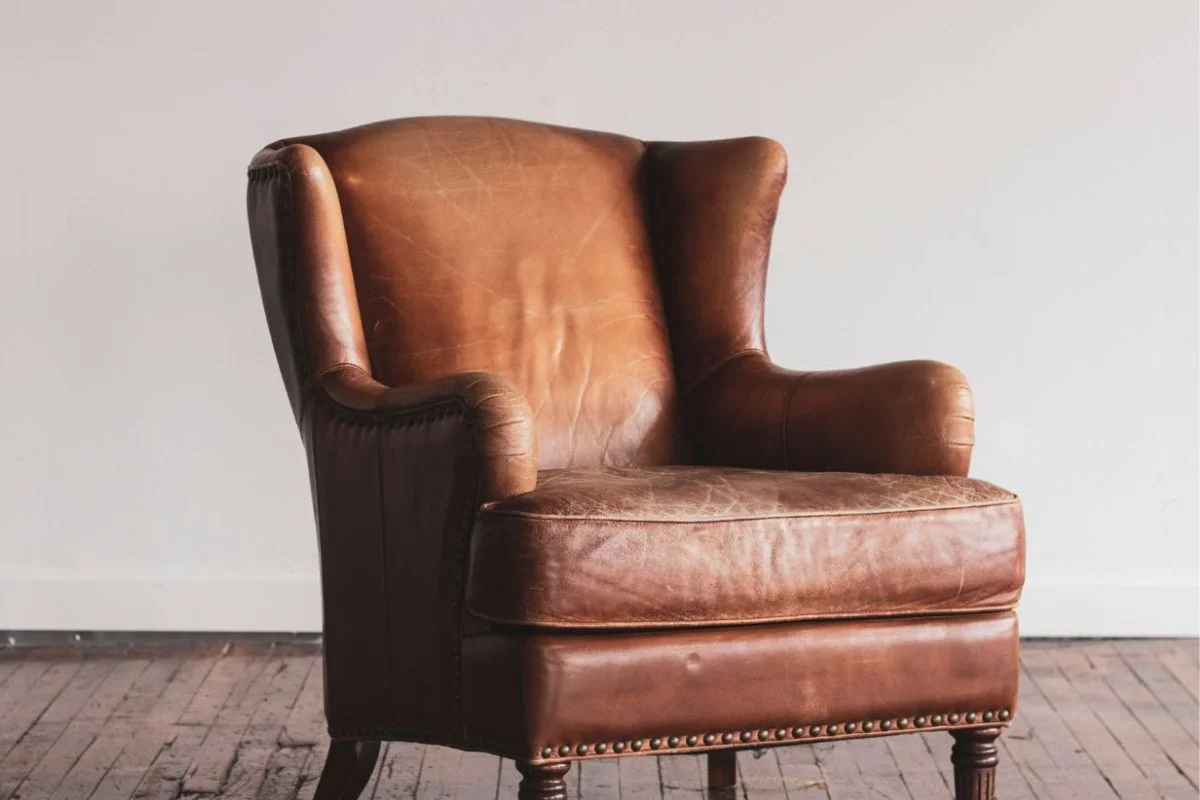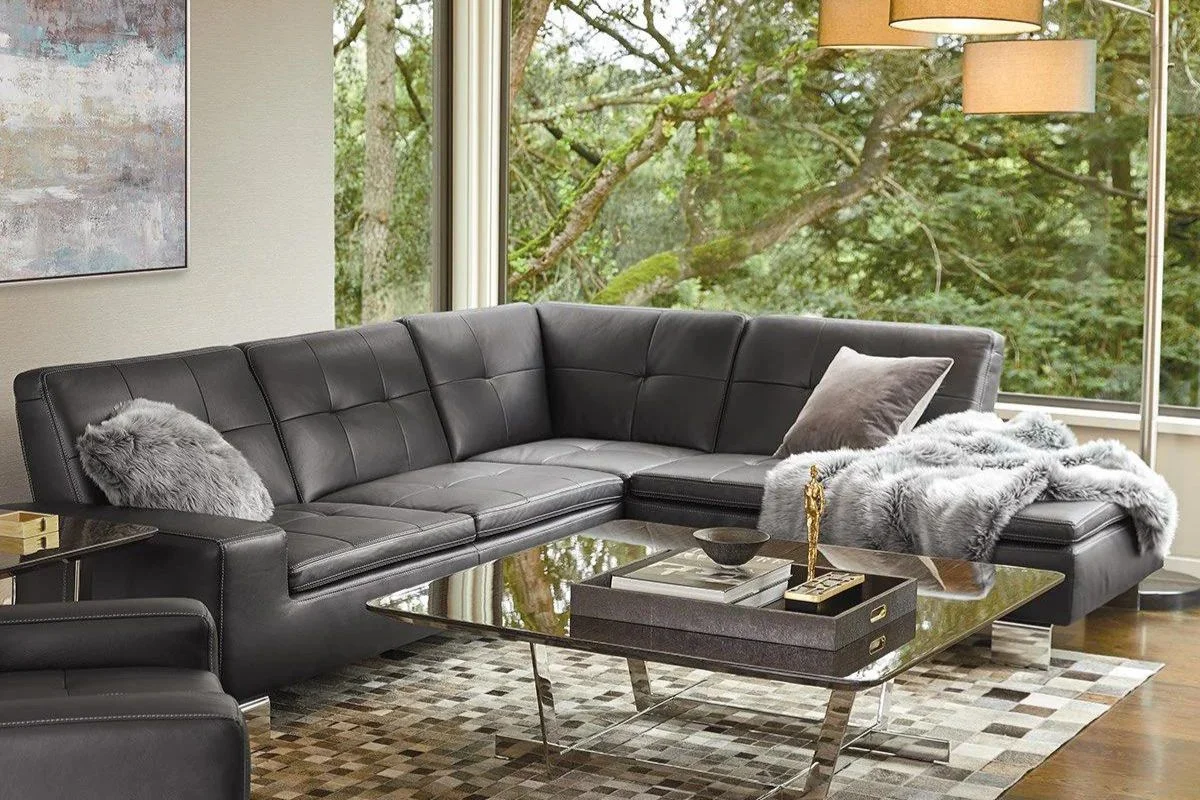
Leather upholstery exudes an unmatched sense of luxury, sophistication, and timeless elegance in any home. However, not all leather is created equal. From the exquisite quality of full-grain leather to the more affordable options like bonded leather, there is a wide range of types available, each with its own unique characteristics and qualities.
In this exploration of leather upholstery, we’ll take a closer look at the different types of leather, from the highest grade to the more budget-friendly options. From full-grain, top-grain, and corrected-grain leather to split-grain and bonded leather, each type has its own distinct attributes, making it important for consumers to understand the differences before making a purchasing decision.
Join us on this journey as we unravel the intricacies of leather upholstery, providing insights into the various types available and helping you make informed choices when selecting the perfect leather upholstery for your furniture and home decor needs.
Importance of Leather Upholstery in Home Decor
Leather upholstery holds a significant place in home decor for several compelling reasons:
Timeless Elegance: Leather exudes a timeless elegance and sophistication that adds a touch of luxury to any space. Its rich texture, natural grain, and supple feel create a sense of warmth and refinement that instantly elevates the ambiance of a room.
Versatility in Style: Leather upholstery seamlessly integrates with various design styles, from classic and traditional to modern and contemporary. Whether you’re aiming for a rustic farmhouse look or a sleek urban aesthetic, leather furniture effortlessly complements diverse decor themes, making it a versatile choice for homeowners.
Durability and Longevity: One of the most significant advantages of leather upholstery is its exceptional durability and longevity. High-quality leather furniture can withstand years of use without showing signs of wear and tear, making it a worthwhile investment for homeowners looking for furniture pieces that stand the test of time.
Ease of Maintenance: Leather upholstery is relatively easy to clean and maintain compared to fabric alternatives. Spills and stains can be quickly wiped away with a damp cloth, and regular conditioning helps preserve the leather’s natural suppleness and luster. With proper care, leather furniture retains its beauty and integrity for years to come, making it an ideal choice for busy households.
Comfort and Luxury: Leather upholstery offers unparalleled comfort and luxury, providing a sumptuous seating experience that enhances relaxation and enjoyment. Its natural breathability ensures optimal comfort in both warm and cool climates, while its soft, supportive texture makes it ideal for lounging and unwinding after a long day.
Investment Value: Leather furniture holds its value over time, making it a sound investment for homeowners. Unlike fabric upholstery that may show signs of wear and tear more quickly, leather furniture retains its beauty and appeal, making it a sought-after asset in the resale market.
Benefits of Leather Upholstery
Leather upholstery offers a multitude of benefits that make it a popular choice for homeowners seeking both style and practicality in their furniture:
Durability and Longevity: Leather is renowned for its exceptional durability, making it highly resistant to tears, punctures, and scratches. Unlike fabric upholstery that may wear out over time, high-quality leather furniture can withstand years of use without showing signs of age, ensuring long-lasting beauty and functionality.
Timeless Elegance: Leather exudes a timeless elegance and sophistication that never goes out of style. Its natural grain, rich texture, and luxurious appearance add a touch of sophistication to any room, instantly elevating the overall aesthetic of the space.
Easy Maintenance: Leather upholstery is relatively easy to clean and maintain compared to fabric alternatives. Spills and stains can be quickly wiped away with a damp cloth, and regular conditioning helps prevent drying and cracking, ensuring the leather retains its supple feel and lustrous sheen for years to come.
Comfort and Support: Leather furniture offers unparalleled comfort and support, molding to the body’s contours for a truly ergonomic seating experience. Its natural breathability ensures optimal comfort in both warm and cool climates, while its soft, supportive texture makes it ideal for lounging and relaxation.
Versatility in Design: Leather upholstery seamlessly integrates with various design styles, from classic and traditional to modern and contemporary. Whether used as a statement piece or incorporated as subtle accents, leather furniture complements a wide range of decor themes, adding a touch of luxury and sophistication to any room.
Hypoallergenic Properties: Unlike fabric upholstery, leather is resistant to dust mites, pet dander, and other allergens, making it an ideal choice for allergy sufferers. Its smooth surface is easy to clean and less likely to harbor allergens, creating a healthier indoor environment for you and your family.
Investment Value: Leather furniture holds its value over time, making it a sound investment for homeowners. Unlike fabric upholstery that may show signs of wear and tear more quickly, leather furniture retains its beauty and appeal, making it a sought-after asset in the resale market.
Types of Leather Upholstery
When it comes to leather upholstery, there are several types to choose from, each with its own unique characteristics and qualities. Here are some of the most common types of leather upholstery:
Full-Grain Leather: Considered the highest quality leather, full-grain leather is made from the outermost layer of the hide and retains the natural grain and markings of the animal. It is incredibly durable, develops a rich patina over time, and is resistant to wear and tear.
Top-Grain Leather: Top-grain leather is made from the top layer of the hide, but it undergoes a sanding process to remove imperfections and create a uniform surface. While not as durable as full-grain leather, top-grain leather is still of high quality and offers a smooth, consistent appearance.
Genuine Leather: Genuine leather is made from layers of leather that are bonded together using adhesives. While it is less expensive than full-grain or top-grain leather, genuine leather is still durable and offers a genuine leather look and feel.
Bonded Leather: Bonded leather is made from scraps of leather that are bonded together with adhesives and then coated with a layer of polyurethane or vinyl. While it is more affordable than genuine leather, bonded leather is less durable and may peel or crack over time.
Faux Leather: Faux leather, also known as synthetic leather or vegan leather, is made from synthetic materials such as polyurethane or vinyl. It mimics the look and feel of real leather but is more affordable and easier to clean. Faux leather is a popular choice for those seeking a cruelty-free alternative to genuine leather.
Creative Ways to Use Leather Upholstery as Accents
Leather upholstery isn’t just reserved for sofas and armchairs; it can also be incorporated into your home decor as stylish accents. Here are some creative ways to use leather upholstery to add warmth, texture, and sophistication to your space:
Leather Throw Pillows: Swap out your fabric throw pillows for leather ones to instantly elevate the look of your sofa or bed. Leather throw pillows add a touch of luxury and sophistication while providing extra comfort and support.
Leather Ottoman or Pouf: Place a leather ottoman or pouf in your living room or bedroom as a versatile accent piece. Not only does it serve as a stylish footrest or extra seating, but it also adds visual interest and texture to the room.
Leather Accent Chairs: Incorporate leather accent chairs into your seating arrangement to add a touch of elegance and refinement. Whether it’s a classic wingback chair or a modern lounge chair, leather accent chairs make a statement while providing comfortable seating.
Leather Bar Stools: Upgrade your kitchen or bar area with leather-upholstered bar stools. The rich texture of leather adds warmth and sophistication to the space, while the sturdy construction ensures durability and longevity.
Leather Bench: Place a leather-upholstered bench at the foot of your bed or in your entryway for a chic and functional accent piece. Not only does it provide extra seating, but it also adds a touch of luxury and style to the room.
Leather Wall Panels: Create a focal point in your living room or bedroom by installing leather wall panels. Whether it’s a full accent wall or a smaller panel behind your bed or sofa, leather wall panels add texture, depth, and visual interest to the space.
Leather Drawer Pulls: Upgrade your furniture by replacing standard drawer pulls with leather ones. Leather drawer pulls add a touch of elegance and sophistication to dressers, cabinets, and nightstands, giving them a stylish and personalized look.
Leather Table Runner: Add a touch of luxury to your dining table or coffee table with a leather table runner. Whether it’s a simple strip of leather or a intricately stitched design, a leather table runner adds texture and visual interest to your tabletop decor.
Tips for Caring for Leather Upholstery
Proper care and maintenance are essential to ensure that your leather upholstery remains beautiful and in excellent condition for years to come. Here are some tips for caring for your leather furniture:
Regular Cleaning: Dust and debris can accumulate on leather surfaces over time, so it’s essential to clean your leather upholstery regularly. Use a soft, dry cloth or vacuum with a soft brush attachment to gently remove dust and dirt from the surface.
Avoid Harsh Cleaning Products: When cleaning your leather upholstery, avoid using harsh chemicals or cleaning products that may damage the leather. Instead, opt for a mild soap or leather cleaner specifically formulated for use on leather furniture.
Spot Cleaning: For spills and stains, it’s essential to act quickly to prevent them from setting into the leather. Blot the spill immediately with a clean, absorbent cloth to soak up as much liquid as possible. Avoid rubbing the stain, as this can spread it further.
Conditioning: Leather upholstery can become dry and brittle over time, especially in dry or humid environments. To keep your leather furniture soft and supple, regularly apply a leather conditioner or leather moisturizer according to the manufacturer’s instructions.
Protection from Sunlight: Prolonged exposure to direct sunlight can cause leather upholstery to fade and deteriorate over time. To protect your leather furniture from sun damage, position it away from windows or use curtains, blinds, or UV-blocking window film to shield it from harmful UV rays.
Avoid Sharp Objects: Sharp objects such as keys, belt buckles, and pet claws can scratch or puncture leather upholstery. To prevent damage, avoid placing sharp objects on or near your leather furniture, and trim your pet’s nails regularly to minimize scratching.
Rotate Cushions: If your leather furniture has removable cushions, be sure to rotate them regularly to ensure even wear and tear. This helps prevent one side of the cushion from becoming compressed or worn out more quickly than the others.
Professional Cleaning: Periodically, consider hiring a professional leather cleaning service to deep clean and condition your leather upholstery. Professional cleaners have the expertise and equipment to effectively remove dirt, stains, and grime without causing damage to the leather.
Conclusion
Caring for leather upholstery is essential to ensure its longevity, beauty, and functionality in your home. By following the tips outlined in this guide, you can maintain your leather furniture in excellent condition for years to come, preserving its elegance and sophistication.




